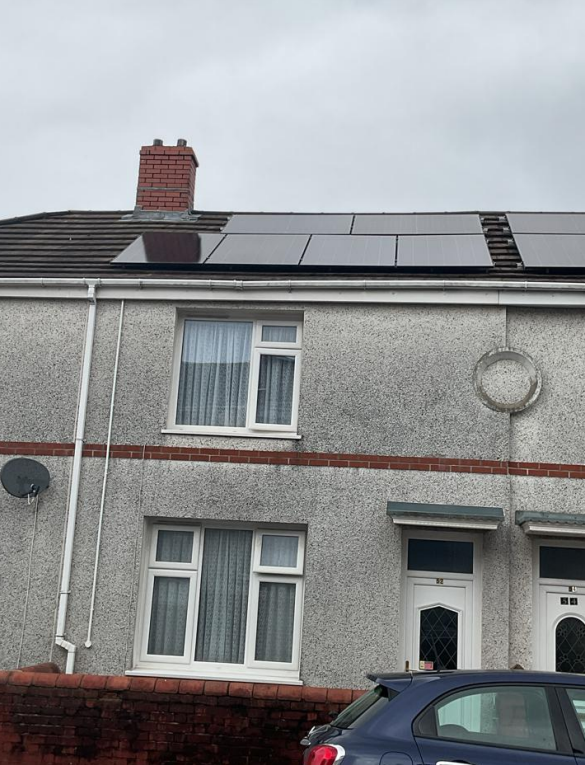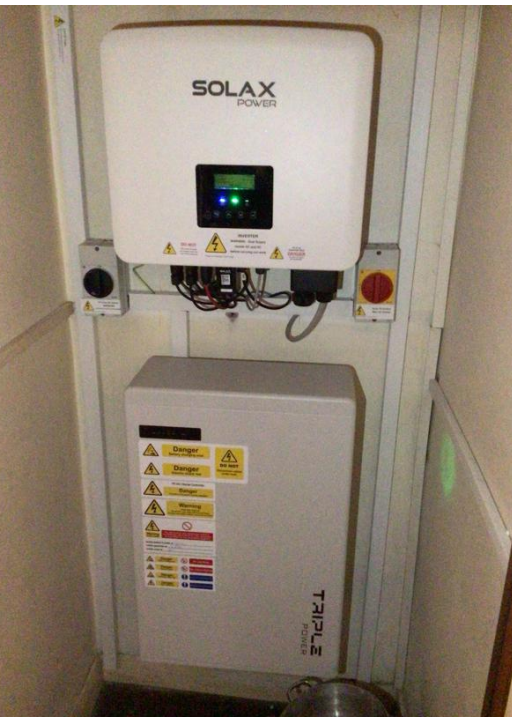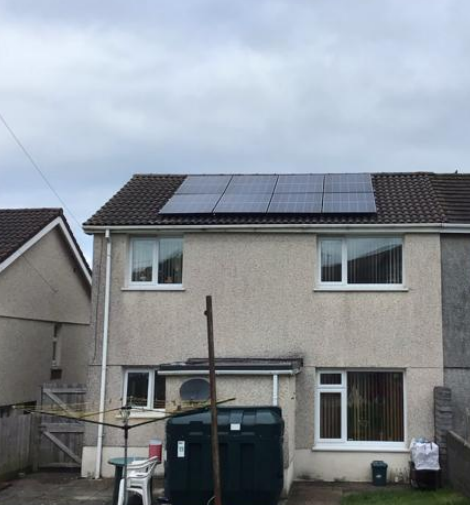Case Study Information
- Welsh programme: ORP
- Type: Retrofit
- Stage: Construction
- Design standard: Building Regulations
- Other measure: In use monitoring
- Other measure: Solar PV
Background

As part of the Optimised Retrofit Programme (ORP 3.3) Tai Tarian’ installed environmental monitoring sensors to 534 properties equipped with photovoltaic (PV) systems. Following market evaluation the chosen sensor’s where iOpt’s advanced sensor technology. All data from our iOpt sensors is transmitted to the Welsh Government’s data processing platform in partnership with Trustmark, adhering strictly to the requirements outlined in the Data Standards section. This ensures compliance with the specified standards for data naming, structure, and communication protocols, supporting robust and consistent data management. The further aim from deployment of environmental sensors was to improve the management and understanding of property conditions through real-time monitoring of environmental factors such as humidity, temperature, and CO2 levels with this information being made available via secure link as anonymised data for the Welsh Government and with the future aim of being used to form part of our asset management tool subject to a Data protection assessment and procedure approval. This case study provides an overview of the functionality and performance of these sensors, key insights expected we are expecting to gain, the impact on our business operations, and lessons learned.
Project learning
The installed iOpt sensors have consistently demonstrated high performance, reliably delivering continuous real-time data. Currently, data from these sensors is accessed via iOpt’s dedicated platform and the future aim is for integration into Tai Tarian’s internal operational systems, which will further streamline access to actionable insights for proactive management of our housing stock. From iOpt’s data insights we currently have a strong sensor uptime rate, with 3,405 sensors installed across 534 properties, and 93.8% actively online. iOpt use their estate management tools to identify and resolve any offline sensors swiftly, which will help us maintain high standards of data reliability and consistency once our internal process is implemented. We anticipate the sensor data will highlight valuable trends and patterns, for example:
- Proactive Damp & Mould Management:
- Sensors identifying properties at high risk of damp and mould issues
- Energy & Heating Efficiency:
- Highlight properties with inefficient heating performance, enabling targeted remedial actions. Which will directly contribute to reducing energy costs and improving tenant comfort
- Indoor Air Quality Management:
- To Identify properties with high CO2 levels which could alert us to ventilation issues, we can then deploy interventions to improve indoor air quality
- Tenant Support & Fuel Poverty:
- Help us to proactively identify properties potentially facing fuel poverty, enabling us to offer targeted support and advice. It is envisaged that these proactive insights will help reduce operational and maintenance costs, enhance tenant satisfaction and wellbeing whilst strengthening compliance with housing standards.
- Supporting Tai Tarian’s Long-Term Data Vision, the deployment of these sensors directly aligns with our strategic goal of becoming a fully data-driven organisation. It supports:
- Predictive Asset Management: Improving our capability to anticipate and prevent maintenance issues, significantly reducing long-term repair costs
- Compliance and Sustainability:
- Providing essential data to meet compliance obligations, such as Awaab’s Law, and bolstering our sustainability initiatives, particularly within our PV-equipped properties
- Remote Monitoring:
- Facilitating cost-effective remote monitoring post-repair, reducing the reliance on costly physical inspections. This strategic approach enhances our ability to manage and maintain housing stock efficiently and sustainably.

Project innovation
We have linked in with the local council authority to explore ‘Digital Connectivity’ with the aim of local secure networks replacing the need for a gateway to be placed in a property.
Challenges
Throughout the deployment, we encountered and addressed key challenges, providing valuable insights:
- Connectivity Considerations:
- Early identification of network limitations in certain property locations underscored the importance of thorough pre-installation site assessments
- Tenant Engagement:
- Effective tenant communication and education about sensor benefits are critical in achieving tenant cooperation and maximising sensor impact
